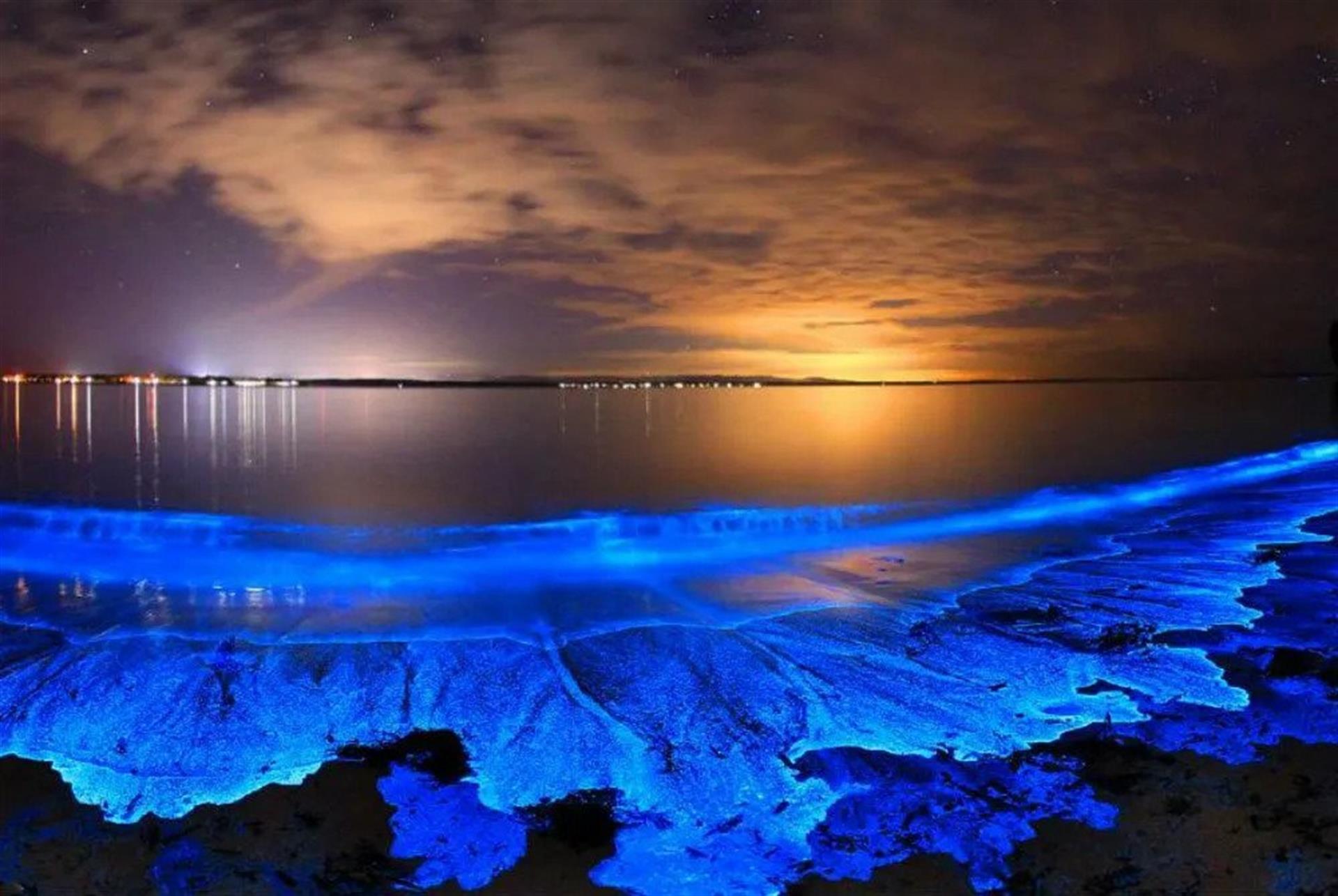The Glowing Ocean


Bioluminescent Phytoplankton
Many of us, whom have witnessed the ocean waters turn vibrant shades of blue or sometimes green in the middle of the night, have many times wondered if it were our own imaginations that created the beauty we saw that night. Have you ever walked along the sand under the nights sky and the sand glowed blue underneath your feet? Or watched a fish swim through the water, seeing all of its movements highlighted in brilliant colors but never actually being able to see the fish? Well what you have witnessed is indeed a natural wonder of the world called Bioluminescence. Here in the Gulf of Mexico, even right here in Destin, we see it quite often while out for an evening stroll along the beach, but it occurs all over the world and comes in many different colors and forms. Interestingly, the illuminations we witness here along the Emerald Coast are actually billions of microscopic unicellular algae called Phytoplankton. Thats right…algae that you cannot even see with your own eyes are emitting that incredible light right before you and as abruptly as they came, mystifying your imagination, they are gone. They are so small, in fact, that thousands of these phytoplankton can fit in a single droplet of water.

So how does something so small give off such brilliant light…and why?
Bioluminescent phytoplankton emits its bioluminescence from a light-generating chemical reaction called chemiluminescence. Did that go right over your head? In easy to understand terms, mixing certain chemicals together can create a “chemical reaction.” One easy example of a Chemical Reaction is mixing vinegar with baking soda. Vinegar reacts with baking soda creating sodium-acetate that when used properly can create an exothermic reaction (meaning it heats up) referred to as “Hot Ice” that you see in those hand warmer packs you break that instantly get hot.
Well, amazingly enough, certain chemicals, when mixed together can create light. Have you ever cracked open a “Glow Stick” and it immediately lit up for hours? Well that is a chemical reaction that takes place between hydrogen peroxide solution and diphenyl oxalate. Similarly, phytoplankton carry chemiluminescence within them called Luciferins and the light produced through oxidation sets off a catalyst called Luciferase when the phytoplankton are disturbed or “threatened”. Bioluminescence is found throughout nature and especially prevalent in our oceans. From micro-organism using bioluminescence to warn off an impending attach to the angler fish using a bioluminescent appendage to lure in the unsuspected prey, the usage of bioluminescence in nature is astounding. As for the phytoplankton, there have been many great biologists that have hypothesized their usage of bioluminescence. However, one thing is very clear and consistent, they always emit their luminescence in the presence of movement, danger or when they feel threatened. Many believe that when phytoplankton feel they are being attacked, they will emit this bioluminescence in order to attract larger species of fish that prey on the very species attacking the phytoplankton. It is quite ingenious really because larger predatory fish are known to stay near these large collections of phytoplankton because they not only present to them an easy meal, by illuminating the attackers position, but can also forewarn them of even larger predators in the area giving them time to escape. But, there is significant risk playing this game. These savvy fish are traversing through a floating minefield that in a moments notice can expose their exact position to even hungrier predators.
The ocean is a marvelous and mysterious place. Being fortunate enough to be able to enjoy the serenity around us and write about events that we experience with our own eyes here in Destin, Florida is exactly why we decided to move here in the first place.
Come Celebrate Life with us…Book a Stay at one of our amazing rental properties or allow us to find that dream home for you and your family so these experiences can be just another weeknight!

Published on Saturday, February 23, 2019